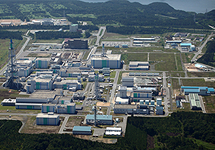Masako Toki
March 9, 2012
View the full WMD Junction article.
Even before the Fukushima disaster March 2011, Japan’s heavy dependence on nuclear energy—notwithstanding the country’s devastating experience with nuclear weapons—was contentious both inside and outside the country. In particular, Japan’s strong commitment to the development of a self-sufficient plutonium-based nuclear fuel cycle has generated significant controversy domestically, regionally, and globally.
Neighboring countries are especially uneasy with the latent nuclear weapon capability implied by Japan’s excess plutonium and advanced fuel cycle technology. Some, such as South Korea, are seeking their own closed fuel cycle. And Japan’s drive to build the first commercial spent fuel reprocessing plant in a non-nuclear weapon state is seen by some as undermining global efforts to halt the spread of such sensitive technology by providing states such as Iran with a prime example of a “virtual” nuclear weapon state.
Despite strong domestic and international criticism and opposition, the Rokkasho reprocessing plant started active testing in March 2006. Yet it has experienced repeated complications during test operations and almost 20 postponements.
In September 2011, six months after Fukushima, Japan began reviewing its entire nuclear energy policy. A key issue has been the future of its planned closed nuclear fuel cycle— involving not only the reprocessing plant but fast breeder reactors to one day burn separated plutonium—and facilities in the meantime to fabricate mixed oxide (MOX) fuel for use in ordinary light water reactors.
Fukushima had an immediate impact on Japan’s pluthermal cycle plans, interrupting all MOX use. Japan has backed away from utilizing MOX, both as a result of the temporary shutdown of nearly all of Japan’s nuclear power plants and because of some particular concerns about the fuel.
If the Rokkasho reprocessing plant begins commercial operation, Japan will continue to increase its domestic plutonium stockpile, separating approximately eight metric tons of plutonium per year, enough to produce 1,000 nuclear weapons.
As a world leader in nuclear disarmament and nonproliferation, the country’s credibility will be seriously questioned. Moving away from the long held goal of commercialization of nuclear fuel cycle will not be easy. But perhaps the unprecedented Fukushima disaster will force the Japanese government to reconsider its longstanding but unwise policy.

